

About Future Stiles
Future Stiles is a relatively new player in the tile industry, but it has quickly gained recognition for its innovative and modern designs. The brand focuses on merging cutting-edge technology with artistic craftsmanship to create unique and visually appealing tiles.
Latest Post


1200x1800mm and 48×72 Inch Tiles Designs in 2025
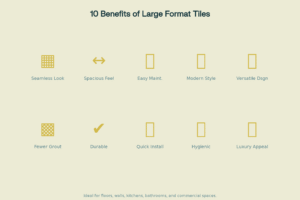
Benefits of Using Large Format Tiles in Modern Interiors

Top Tile Trends for 2025: Colours, Textures and Finishes
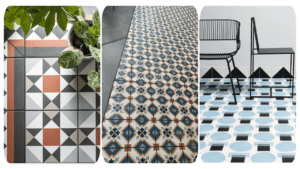
Concrete Tiles, Cement Tiles, and Cement Tiles for the Floor in 2025

Black Tiles Design: Modern Black Tiles Living Room
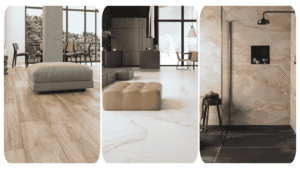
Matte Finish Tiles: A Modern Touch of Subtle Elegance 2025
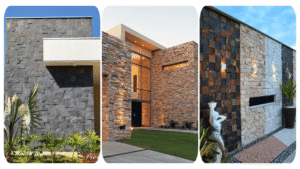
Front Elevation Tiles Design: Stylish Elevation Tiles & Affordable Prices
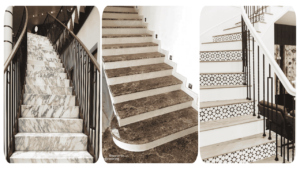
Top 30 Rough Tiles for Stairs Designs in 2025
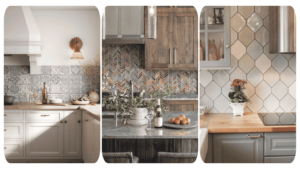
Dado Tiles Designs: Kitchen Dado Tiles, Textures, Prices & More
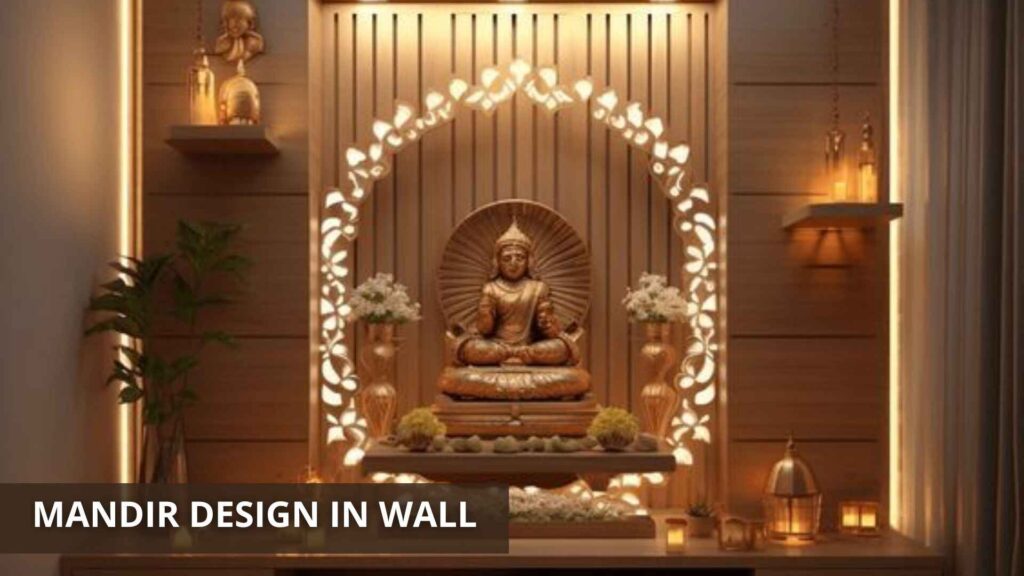
20 Latest Mandir Design in Wall Ideas in 2024
- Futurestiles
- September 20, 2024
- 6:55 pm
Equally, the mandir, or home temple, is of particular significance in India. It is a place of worship where families come together, perform prayers, and meditate. In the current day and age, architectural designs have become considerate enough to incorporate mandirs in a bid to include spirituality in daily routines. “Mandir design in the wall of the house/modern house” has become one of the intricating design features of the modern house enabling the owners to reserve some spots for prayers without messing up with the elegance or beauty of the house. Be it a small apartment or a big villa, designs of wall mounted mandir looks stylish and are practical and respectful of religious needs.
1. The Significance of a Mandir in the Home
Before discussing the actual design elements, it is important to highlight the nature of the mandir from a cultural and spiritual perspective. In Indian homes, the mandir is usually a dedicated place for the daily pooja where devotees conduct rituals, and prayers and make offerings to the divine. It is termed the center of the house implying direct access to divine power. The location, orientation, and form of the mandir are of great impact in sustaining the spiritual energy of the area. Optimally designed wall niches for Mandir suit the modern style of dwelling design and interior decoration guaranteeing the sanctity of the room.
2. Choosing the Right Wall for Your Mandir
It’s essential to note that when constructing a wall-mounted mandir, choosing the right wall is very important. Known as Vastu Shastra, an Indian architectural discipline, places a mandir in the northeast corner of the house which is the most favorable position. Such space, called Ishan Kona, is said to be a source of positive energy and one where an individual can cultivate spirituality. In the case of a wall-mounted mandir, the east or north walls are also recommended if the northeast is not accessible.
Space is not the only issue, however, consider the position of the mandir to the daily routines. It must be situated in a quiet and calm part of the house away from busy areas such as the living room or kitchen. Constructing a mini mandir within a hallway at the foyer or in the corner of a bedroom is best as it allows for a peaceful area for prayer.
3. Wall-Mounted Mandir Design Ideas
Mandir design in wall spaces presents designers with unusual and practical opportunities. There is no limit to imagination, it is possible as well both to create nowadays uncluttered style and to decorate in the traditional complicated manner. Here are a few fun design options for your wall-mounted mandir:
a) Traditional Carved Wooden Mandir
The mandirs made of wood with such showerla designs are preferred and are splendid even today. Wherever, whether it be a teak or rosewood or mango wood These mandirs are a perfect combination of beauty and warmth as they are ancient determined. Most of the carvings would include idols, flowers, or Indian designs, which are indeed erect a cultural aspect of the site. A wooden inset affixed to a wall that holds an idol and has a raised shelf or is on photo is an innovative traditional feature that combines so well with the contemporary décor.
The mandir can be further adorned using brass bells, diyas and traditional drapes in such a way that the beauty doesn’t clash with the functionality of the items.
b) Minimalist Mandir with Floating Shelves
For the more crowded apartments or those who are minimalist in decor, then the use of a sleek mandir design using floating shelves is quite attractive. With the use of floating shelves, it is possible to reserve a vertical space for the deities without the need to place elaborate wall treatment. Go for straight lines, plain lighting and soft colors for modern look. Walls can be a clean and polished aspect with the use of white marble, stone, or wood as the floating shelves. There is also the option of placing a small prayer stool or cushion beneath the lighter fixations for ease of use during prayers.
With this design, the mandir gets incorporated into the overall interior of the house while still serving the purpose of a placid space for puja.
c) Marble Mandir for Luxurious Elegance
The quality of marble as a material is such that it is often linked with purity and godliness, hence it is suitable to be used in making an elaborate wall-mounted mandir. A white or back ivory white mausoleum of cheap material that has but slight carving of details will still beautify this area without compromising the sanctity of the place. Such a mandir design can also consist of shelves made of marble, a back wall made of marble with beautiful jaali work, or just a very simple marble partition for provision for idol placements.
The addition of a soft LED backlight to the marble hinges can further add to the temples sophistication making a serene lighted ambience for prayer.
d) Jaali Patterned Mandir for a Contemporary Twist
Jaali patterns are decorative perforations, which are also called latticework and are generally present in Indian architecture. They give beauty as well as serenity to the modern wall mounted mandir. You can carve out this space in the wall and cover it with decorative jaali work done in wood, metal or stone. Such designs enhance the beauty of the mandir and most importantly, allow light and air to permeate into the mandir.
Jaali designs can work in both space, whether traditional or modern, but it doesn’t just end there as it also adds cultural elements against modernity.
e) Temple Arch Mandir with Niche Design
Another imaginative idea for wall-mounted mandir design is making a niche or recessed space in the wall. The arch construction can also be quite elaborate styles or a plain wooden frame which very much symbolizes the front view of the Indian temple. You can keep the idols inside the niche and also decorate with little lamps and bells and other hanging items.
In order to create the pious atmosphere, you may also consider dim light inside the niche where the mandir sits. This type of mandir design is suitable in cases where limited space is concerned as the niche is build in the wall and does not cover any floor area while providing the respective concentrating worship area.
f) Wall Cabinet Mandir with Doors
For those who wish to conceal their mandir when not in use, a wall mounted mandir with doors presents the best alternative. The design could be as minimalistic or as elaborate as you wish it to be. This could be a wooden cabinet fixed on the wall with jaali or carved doors which functions as a decorative and still functional mandir. The doors could be opened when prayers are being conducted but once done, the doors can be closed to keep the neatness of the house.
In terms of a more classical look, you can choose brass for both external and internal locks and decorative knobs also intricate work on the door.
4. Decorating Your Wall-Mounted Mandir
Once the mandir contour has been decided upon, the next thing is to consider how to make the interior more spiritual than plain. Here are useful suggestions you can use:
- Lighting: Lighting in the mandir is an important consideration as it helps set the right atmosphere. One of the best possible lighting that can be used is soft lighting through the use of things like LED strips, candles, or oil lamps that make the mandir warm and peaceful. Backlit – spotlights can be used where the idols that have been placed on the temples to improve their appearance even further.
- Accessories: Accessories like brass bells, hanging diyas, incense holders, or statues and pictures of different gods will also help make the mandir unique. As well as enhancing the aesthetics of the area, these artifacts have their place in the spiritual realm.
- Wall Art: You can easily enhance the look of the area which is around the mandir which is mounted on the wall by giving it some beautiful embroidered Indian patterns, framed pictures of deities, or patterns like om lotus or peacock symbols. These patterns will bring additional height to the holy area.
- Flooring: To complete your whole sacred corner, if you want to use it as a full-fledged one you may place a rug or mat under the mandir to kneel or sit on the floor praying. Soft piles of colorful printed Indian rugs add a further degree of comfort and embellishment.
5. Maintaining the Sanctity of Your Mandir
Maintaining cleanliness and orderliness in your mandir is equally important. Dusting of the shelves, idols, and wiggle-waggle every other day, as well as the presence of ample lighting and air circulation in the area, should also be the norm. Don’t put in any extraneous items near the mandir, as it’s a sacred space meant for worship and reflection.
When using an oil lamp or candle, safety aspects should be observed because the flames should be properly put out after prayer. With the right care and cleanliness, the mandir will look immaculate and will always inspire pleasant feelings in everyone’s home.
Conclusion
A “mandir design in the wall” is a new and beautiful concept to add a spiritual touch into the contemporary interiors. If you get bored with the traditional intricately carved wood, minimalist wall shelves or fancy marble temple designs, then wall mandirs are the best options for you to rejuvenate your creativity and offer devotion. It is possible to realize this by consistently planning the materials, design features, and ornaments for the mandir so that it is serene, sacred, and blends well with the house without losing its spiritual nature.
Over bedding a mandir space into the wall not only makes better use of space but also provides a new dimension which forms the highlight in the house. With time, energy and good design, your wall temple shall in future become one of the places where people go to worship and introspection.
